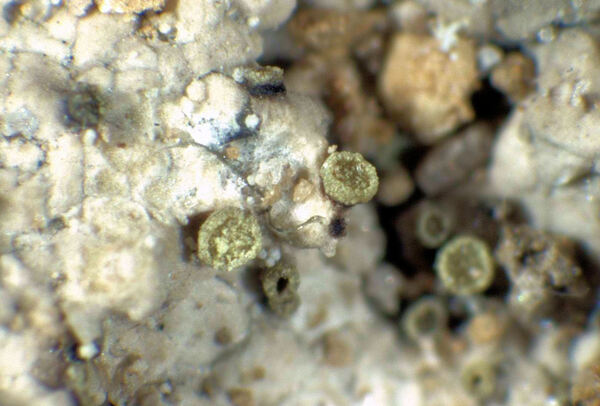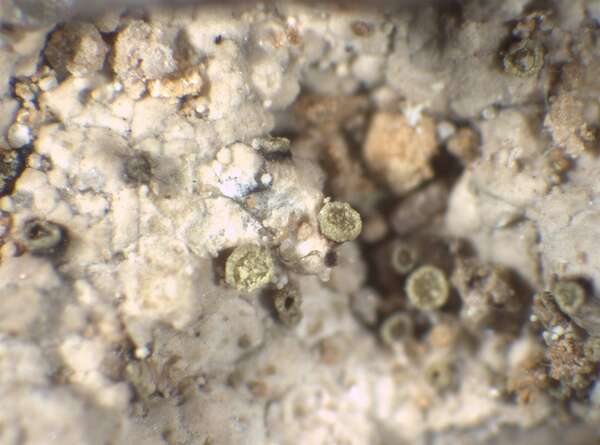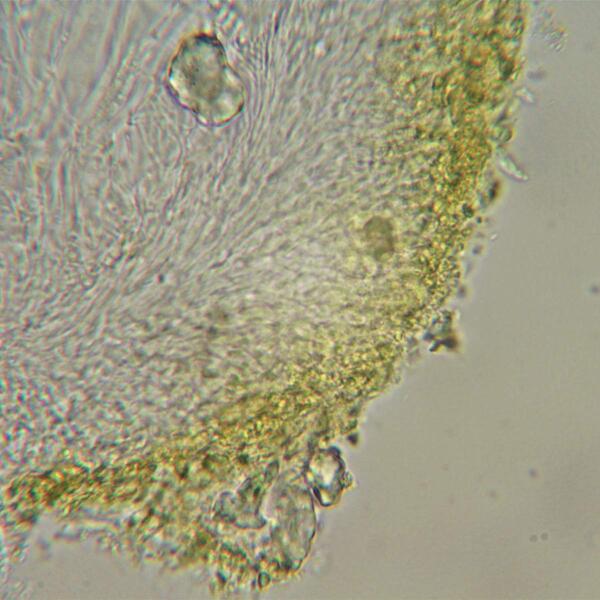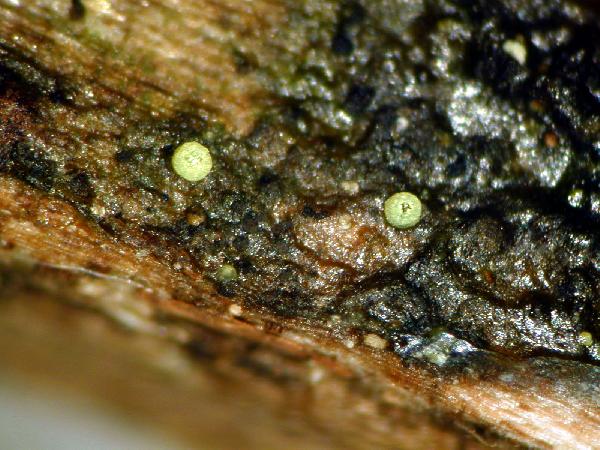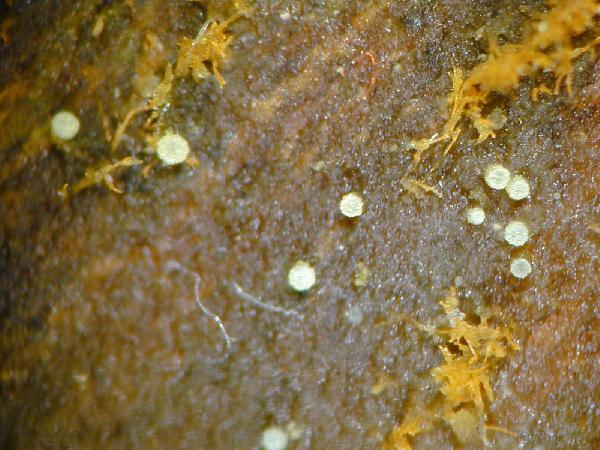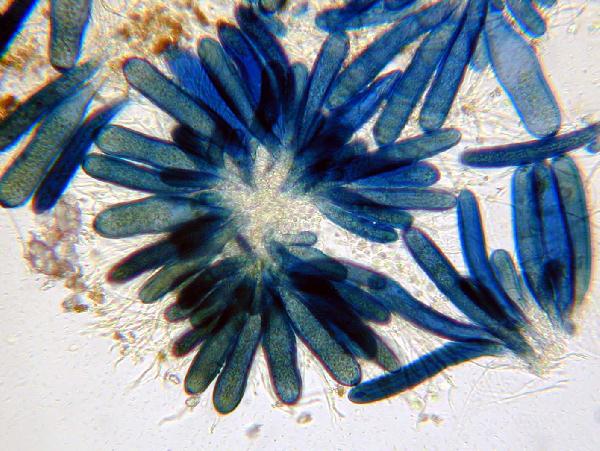Thelocarpon lichenicola (Fuckel) Poelt & Hafellner
Phyton, 17: 70, 1975. Basionym: Ahlesia lichenicola Fuckel - Jahrb. nassauisch. Ver. f. Naturkunde, 23/24: 281, 1870.
Synonyms: Thelocarpon ahlesii Fuckel; Thelocarpon applanatum H. Magn.
Distribution: N - Ven (Nascimbene & al. 2021), TAA (Hafellner 1995, Brackel 2016, Nascimbene & al. 2022).
Description: Thallus not apparent (species not lichenized), mostly reduced to small, obconical to shortly cylindrical, bright yellow-pruinose, 0.1-0.2(-0.35) mm wide, 0.15-0.2 mm tall (at least 0.6 times as wide as tall) fruiting warts. Ascomata frequent, semi-immersed in the warts, at first perithecioid but soon turning apothecioid, with an expanded, exposed, brownish but often yellow-pruinose disc and a thin, raised margin. Exciple colourless, 15-30 μm thick, without algae; periphyses absent; paraphyses slender, sparingly branched, not apically thickened, c. 1 μm thick; hymenial gel I-. Asci many-spored, cylindrical-clavate, rather thick-walled, I+ pale blue, the apex slightly thickened and with a darker I+ blue ring-structure within. Ascospores 1-celled, hyaline, broadly ellipsoid, thin-walled, 4-6(-7.5) x 1.2-2(-2.5) μm. Pycnidia rare, flask-shaped, immersed in the warts, yellow-pruinose in upper part, with a colourless wall. Conidia oblong-obtuse, simple or rarely 1-septate, 6.5-8 x 1.8-2 μm. Photobiont absent. Spot tests: K-, C-, KC-, P-. Chemistry: yellow pruina with pulvinic acid derivatives. Note: on clay soil in disturbed sites, often in Calluna-heaths, mostly on Baeomyces rufus; doubtfully lichenised, to be searched for further in the Alps.
Growth form: Crustose
Substrata: soil, terricolous mosses, and plant debris
Photobiont: green algae other than Trentepohlia
Reproductive strategy: mainly sexual
paras Baeomyces spp.
Commonnes-rarity: (info)
Alpine belt: absent
Subalpine belt: extremely rare
Oromediterranean belt: absent
Montane belt: rare
Submediterranean belt: extremely rare
Padanian area: absent
Humid submediterranean belt: absent
Humid mediterranean belt: absent
Dry mediterranean belt: absent

Predictive model
Herbarium samples
Growth form: Crustose
Substrata: soil, terricolous mosses, and plant debris
Photobiont: green algae other than Trentepohlia
Reproductive strategy: mainly sexual
paras Baeomyces spp.
Commonnes-rarity: (info)
Alpine belt: absent
Subalpine belt: extremely rare
Oromediterranean belt: absent
Montane belt: rare
Submediterranean belt: extremely rare
Padanian area: absent
Humid submediterranean belt: absent
Humid mediterranean belt: absent
Dry mediterranean belt: absent

Predictive model
| Herbarium samples |
 INDEX FUNGORUM
INDEX FUNGORUM
 GBIF
GBIF
 DOLICHENS
DOLICHENS
